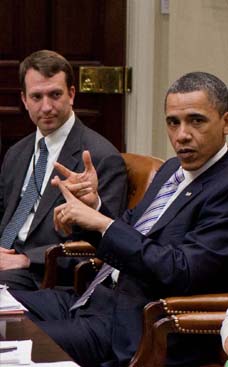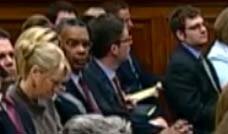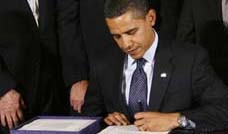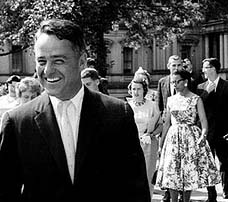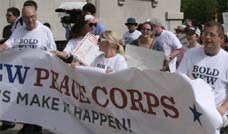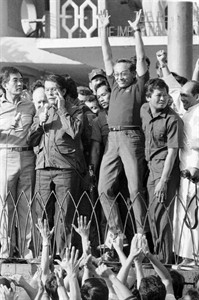
The "People Power" revolt looked and felt like a vibrant Filipino village fiesta. The few shots fired were mainly in the air, and there were minimal reports of casualties or looting. The much anticipated showdown between Marcos and the defectors never occurred. Aquino served a full six-year term despite a half-dozen coup attempts. She was followed by four more democratically elected presidents, including Ramos and in 2010, her son, President Benigno S. Aquino III, who is leading the 25th anniversary celebrations. The last election also saw an aging Imelda Marcos win a congressional seat, and her son Bong Bong a seat in the Senate. Daughter Imee is governor of Ilocos province. While the revolution ended well, with limited bloodshed, it has not brought about all the changes Filipinos wanted. The country is still mired in poverty, corruption and insurgency. Still, 25 years later, all celebrate the nonviolence of those four revolutionary days.
25 years later, RPCV David Briscoe recalls Philippines' 1986 uprising against Marcos
25 years later, former AP bureau chief recalls Philippines' 1986 uprising against Marcos
By David Briscoe (CP) –
Feb 25, 2011
Caption: FILE - In this Feb. 24, 1986 file photo, then Deputy Chief of Staff Gen. Fidel Ramos jumps in joy after hearing an announcement that President Ferdinand Marcos has left the presidential palace as a sign of capitulation following the four-day "People Power" revolt. Ramos later took over power in 1993 from President Corazon Aquino who was catapulted to power after Marcos fled. On Feb. 25, 1986, the Philippines was a country that appeared to be on the edge of chaos or civil war with some of the same fear and uncertainty now spreading across the Arab world. (AP Photo/Bullit Marquez, File)
MANILA, Philippines - In the end, it was more like a big fiesta than an angry protest.
Filipinos, rich and poor, nuns and priests, stuck flowers in the muzzles of tanks. They abandoned cars and buses and thronged the streets of Manila, waving yellow banners and celebrating the end of dictatorship.
Like today's popular revolts in the Middle East, the Philippines' "People Power" revolution of a quarter-century ago brought down an authoritarian ruler. But the most remarkable thing about the end of Ferdinand E. Marcos' reign was that, in a land long troubled by political violence, the regime toppled with little bloodshed.
In the four days leading up to Feb. 25, 1986, the Philippines seemed a country on the verge of chaos or civil war. As The Associated Press bureau chief in Manila, with 20 years of experience with the Philippines, even I didn't know what to expect.
Following a hastily called presidential election, two candidates had declared victory: Marcos, the U.S.-backed incumbent, and Corazon Aquino, the widow of opposition leader Ninoy Aquino, who'd been assassinated three years earlier.
Marcos and Aquino each defiantly staged inaugurations. Meanwhile, two top military leaders defected from Marcos and holed up in a military camp with scores of young, reform-minded officers.
The dictator lined up his artillery and rolled tanks through the streets.
Meanwhile, hundreds of thousands of Filipinos from all walks of life massed in the streets around the encampment, ironically, to protect the military defectors.
In the days before mobile phones and Twitter, it was a movement that grew by radio broadcasts and word-of-mouth. They came with rice, pork stew, bananas, fried chicken, soft drinks. They passed plastic bags of food through security fences to smiling soldiers inside the military compound and sang opposition songs.
I remember first hearing Marcos on the radio in Manila in 1966, addressing the U.S. Congress as a new and important ally in the Vietnam War. At the time, I was a teacher with the U.S. Peace Corps in the Philippines.
No political rookie, Marcos had an unmatched mastery of Philippine politics, which can be among the roughest anywhere.
Marcos himself was once accused of killing his father's political rival, and as a law student he successfully defended himself before the nation's Supreme Court.
He later found a strong personal ally in U.S. President Ronald Reagan. I recall being in the presidential palace in 1981 when then-Vice-President George H. W. Bush declared America's admiration for Marcos' "adherence to democratic principles and democratic processes."
Nor was Cory Aquino anyone to be taken lightly.
My recollections of her span a transformation from Boston-based housewife standing in the background as her exiled husband spoke to reporters in New York, to the defiant widow who insisted that Ninoy's body be displayed in her home still clad in the bloodied white clothing he wore when slain in August 1983.
Sadly, Ninoy Aquino's assassination was yet another example of the Philippines' violent political history.
A hundred or more killings typically accompany a national election, and demonstrations were common in Manila, often ending in violent clashes, with shootings, bombings and tear gas. Reporters sometimes got caught in the melee, and I can tell you firsthand that tear gas is no fun.
But this uprising was different. For starters, tear gas was not used at EDSA, the Manila boulevard where the protests were centred and which lent its name to the revolution.
Marcos supporters said he chose not to fire on civilians because as president he represented all Filipinos. That's one version. Opponents said his soldiers refused to follow orders because they didn't want to attack fellow Filipinos.
At any rate, the seemingly weak response was unexpected, and may have emboldened the crowd.
The realization that Marcos could possibly lose the standoff came suddenly, when protesters took over the state-run television network.
Marcos himself was on the air exposing what he claimed was a military plot to oust him, parading the alleged conspirators across the screen on national TV.
Suddenly, the screens in the AP bureau went blank.
They later lit up with a panel of opposition leaders criticizing Marcos in the same government studio where he'd been praised and defended just hours earlier. It was a defining moment, and the import of what was happening was immediately apparent. It was hard to believe it was real.
Over four days and three nights, crowds along EDSA continued to swell. A church-run radio station, in particular, was among the main instigators, calling the faithful to join the movement in a nation that is overwhelmingly Roman Catholic.
But even then, it was difficult to conceive of the wily Marcos ever backing down.
He did not have a record of losing. For 20 years, he'd held elections and fought communist and Muslim rebels while nurturing strong ties with the U.S.
Indeed, it was only in the final hours that Reagan withdrew his support of Marcos. Later, we learned that then-U.S. Sen. Paul Laxalt, representing the White House, told Marcos to "cut and cut clean."
After a long pause, Marcos said, "I am so very, very disappointed."
A U.S. military plane flew the dictator and his family to exile in Hawaii, the end game in a story that had captured the world's attention since Ninoy Aquino's assassination.
As the end neared for Marcos, Gen. Fidel Ramos, one of the two top military officials who had broken with Marcos, emerged from the encampment and jumped for joy - literally.
Later, crowds swarmed the presidential palace, a monument to the excess enjoyed by Marcos and his wife, Imelda, who became infamous for her massive collection of designer shoes in a country besieged by poverty.
The "People Power" revolt looked and felt like a vibrant Filipino village fiesta.
The few shots fired were mainly in the air, and there were minimal reports of casualties or looting. The much anticipated showdown between Marcos and the defectors never occurred.
Aquino served a full six-year term despite a half-dozen coup attempts. She was followed by four more democratically elected presidents, including Ramos and in 2010, her son, President Benigno S. Aquino III, who is leading the 25th anniversary celebrations.
The last election also saw an aging Imelda Marcos win a congressional seat, and her son Bong Bong a seat in the Senate. Daughter Imee is governor of Ilocos province.
While the revolution ended well, with limited bloodshed, it has not brought about all the changes Filipinos wanted. The country is still mired in poverty, corruption and insurgency.
Still, 25 years later, all celebrate the nonviolence of those four revolutionary days.
___
David Briscoe was Manila bureau chief for The Associated Press from 1980 to 1986 and has reported on Pacific affairs from Washington and Honolulu. He retired from The AP in 2009.
EDITORs: David Briscoe was The Associated Press bureau chief in Manila during the popular uprising that brought down dictator Ferdinand Marcos 25 years ago this week. He recalls the chaos, fear and joy that enveloped Manila during February 1986.








